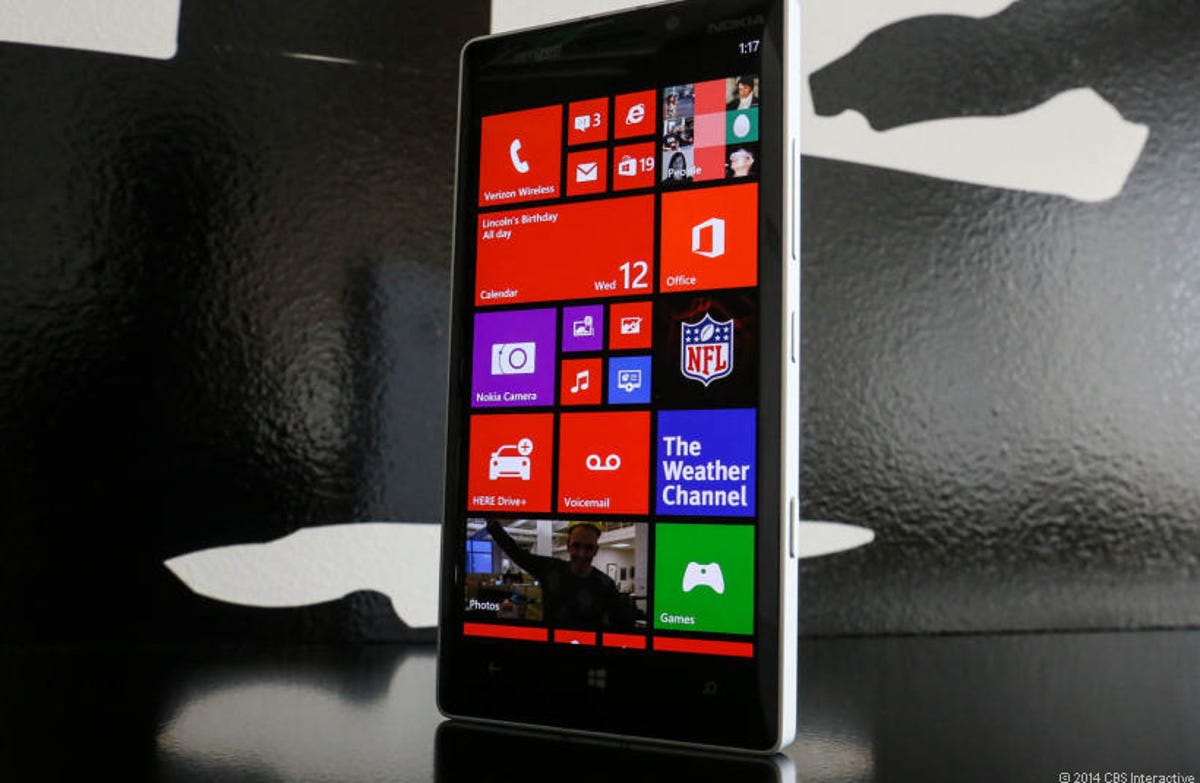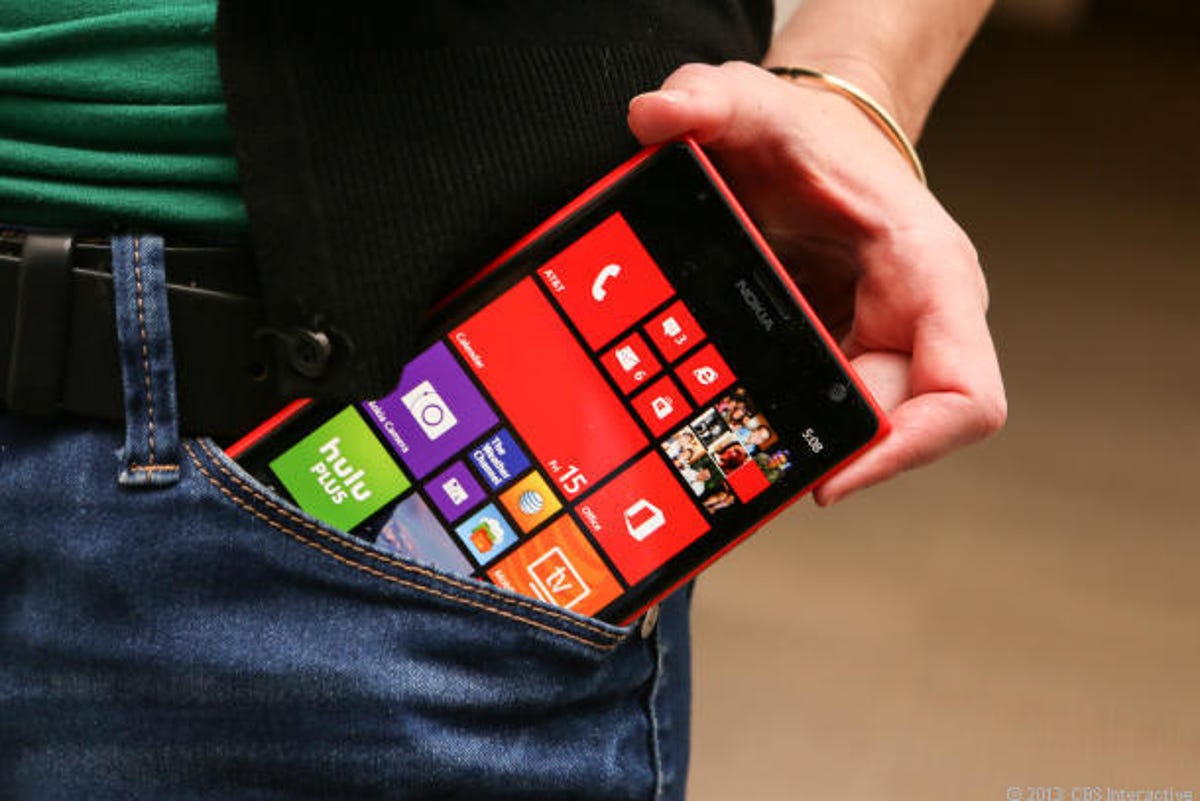
Josh Miller/CNET
Microsoft’s first flagship phone better be a winner.
All three of the Microsoft-branded Lumia smartphones the company has launched since the Nokia deal closed in April 2014 have been low-cost devices with entry-level specs. Yeah, yeah, the Lumia 535 and 532/435 combo are entirely fitting in the strategy of selling to cost-sensitive emerging markets. That doesn’t stop these starter phones from taking the wind out of the sails of what could have been a very transition from Microsoft, The Software Supplier to Microsoft, The Phone Maker.
Microsoft is also way overdue on its next flagship. It’s been a year since the Nokia Lumia Icon emerged for Verizon, which last April morphed into the Lumia 930 (the same body and guts but for the rest of the world). While this may be a pipe dream of mine (since Windows 10 won’t really, really be ready for a few months, I’m holding out hope that Microsoft will use its first press conference as Microsoft, The Phone Maker to show us what it can do with a flagship.
Body and design
Microsoft has so far let the Nokia designers it brought into the fold continue creating pleasantly blocky unibody phones with bright plastic colors (and sometimes metal frames).
Related stories
- Microsoft preps for its first major show as a phone-maker: Flagship Lumia in sight?
- Windows 10 Preview to reach only subset of phones at launch
- What Windows 10 means for Windows Phone? Less than you’d expect
There’s nothing wrong with continuing to make Lumia phones recognizable, but the special occasion of a first flagship deserves some extra care in its design, something that really stands out. We know that Nokia could do it. Its Asha 503 had a distinctive trapped-in-ice look that no other phone has had.
Make it metal, keep some bright colors, but let’s see some sort of design element that distinguishes this next flagship from any other Lumia phone.
Hardware can go far
Specs don’t tell you how a phone will ultimately perform, but they absolutely set expectations. Microsoft’s first flagship will need to aim high to get people to notice, especially in the camera and processor departments.
The Nokia Lumia 1520 has been the only Lumia phablet so far. I wouldn’t be surprised to see a phone screen bridge the gap between the 5-inch Icon/930 and the gargantuan 6-inch 1520. 1080p resolution is fine for a 5-inch screen, but let’s see the next-gen 2,560×1,440-pixel resolution for any screen larger.


Now playing:
Watch this:
Microsoft shows off Windows 10 on a Lumia smartphone
1:13
Microsoft has publicly said that it’ll use Qualcomm’s most advanced Snapdragon 810 chip in a future phone. Let’s hope it makes it into the first high-end Microsoft Lumia. Snapdragon 810 comes with a horde of impressive tricks, including camera support for up to 55 megapixels and a really neat built-in wireless charging feature called WiPower that powers up a device placed anywhere in a charging area.
While Microsoft’s flagship phone probably won’t use much greater than a 20-megapixel rear-facing lens at this point, it could be the first vendor to take advantage of Qualcomm’s WiPower technology.
Speaking of cameras, the Lumia — which has a history of strong lowlight photography — must amp up selfies with a large front-facing camera lens to go with the existing Lumia Selfies app.
Microsoft Lumia 535 (pictures)






Battery life is a real trigger issue globally. If the flagship Lumia does indeed use Snapdragon 810, it can turn on the fast-charging Qualcomm Quick Charge 2.0 technology that can rapidly re-power a low battery.
Windows 10 to make a point
My biggest expectation is that a flagship Lumia will run Windows 10 for phones, Microsoft’s brand-new operating system for all its devices. On Monday, Joe Belfiore, vice president for Microsoft’s Operating Systems Group, tweeted that the technical preview of Windows 10 for phones is still on track for February for select devices. The full-blown OS won’t ship until later.
Windows 10 brings less functionality to phones than I had hoped, but it will spruce up the interface with a few new capabilities. Likewise, Skype comes to the messaging app, a tighter form of integration for the Microsoft-owned VoIP calling service.


Screenshot by Lynn La/CNET
Other than those, the biggest benefits will be “universal apps” that cross over from Windows 10 for laptops and tablets, and a new browser called Spartan.
The presence of Windows 10 isn’t as crucial for the tools it brings as it is for keeping the forthcoming flagship current.
Apps, once again, are key
Universal apps in Windows 10 will go a long way to fixing the glaring problem that is Microsoft’s app store, a major reason why the OS is struggling to maintain a meaningful hold on the smartphone market after five years.
Microsoft has worked to woo developers, and to fill in the most major gaps in its catalog. However, there are still far too many apps that are basic and poorly functioning versions of a website (rather than a purpose-built program). The truth that Microsoft’s OS is an afterthought for developers shows in its catalog of titles.


Josh Miller/CNET
The absence of Google services is also a major problem for a workforce that’s increasingly using Google tools for business. If Microsoft can’t get Google to cooperate, it’s time to commission developers to create sturdy apps on its own, without Google’s help.
Don’t skimp on ads
A flagship phone deserves the all-star treatment. I expect Microsoft to push a tremendous amount of marketing effort behind the phone.
Hey, Cortana. Welcome to the Windows 10 PC (pictures)






Beyond TV and print ads, Microsoft will need to shore up a weakness that’s hurt it before: getting sales reps pumped up about the phone. The high-end phone will need to see wide distribution across carriers; it’d be great if the phones sold in brick-and-mortar outlets besides Microsoft’s own retail stores.
Make it count
By launching three low-end Lumias before a flagship, Microsoft has decided to start its tenure as a phone-maker with a whimper. It’s still early enough for Microsoft to make its mark. After squandering three chances to make a real impact, Mobile World Congress 2015 would be a meaningful place to the set the tone about what Microsoft as a phone-maker is going to be about. Whenever Microsoft chooses to launch its next flagship, let’s hope that message is — at last — a strong one.


Now playing:
Watch this:
What is Mobile World Congress?
1:36



